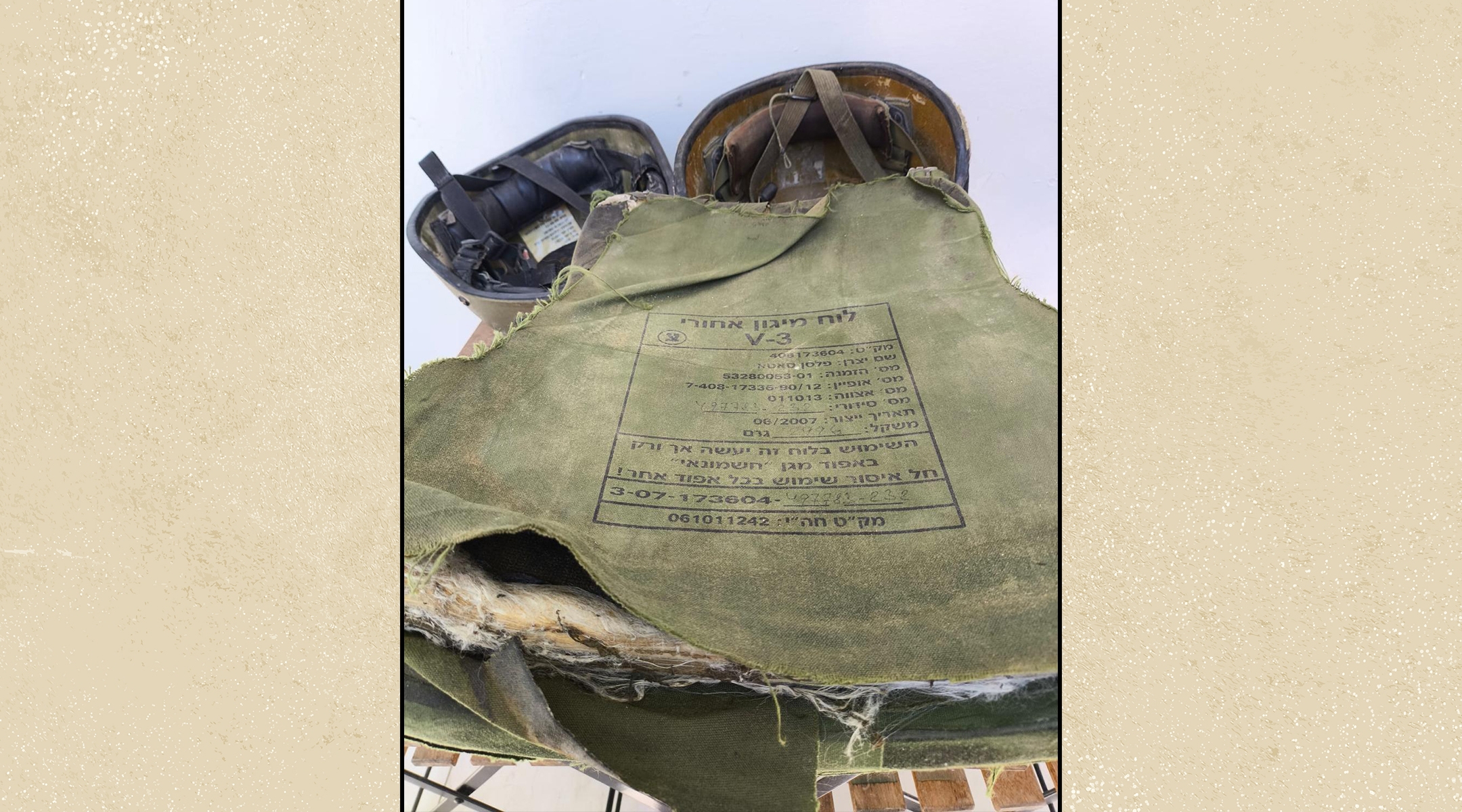A new website quietly launched by the Israeli military lets soldiers anonymously check whether their safety equipment complies with official standards, in a tacit admission both that donated gear is widespread, and that army-issued gear may be unsafe.
It’s the latest development in a debate that has gone on since the start of the war in Gaza over whether the army is adequately supplying troops with protective equipment.
The military has long claimed that it gives soldiers everything they need and has cast donated gear as potentially harmful. But it is now officially telling soldiers that if they are using certain army-issued combat gear, their lives could be in danger.
For example, the website says that any ceramic body armor plates manufactured before 2009 that were provided by the army must be replaced. So must any army-issued helmet made of metal.
Members of the volunteer network providing soldiers with hundreds of millions of dollars’ worth of donated gear throughout the war have long tried to sound the alarm about troops being sent to battle with gear that’s outdated and unsafe. For these civilian watchdogs, the launch of the website provides validation.
“The first step to address a problem is to admit that it exists,” said Daniel Mael, who leads a donation drive known as Unit 11741. “While it is too late for many soldiers who fell due to subpar equipment, let’s hope that the website can usher in an era of further awareness about the need for safe equipment in the battlefield and that the IDF begins to provide safe gear to all of its combat soldiers and reservists.”
In the website’s Q&A section, the Israel Defense Forces confirms that the use of bad gear has had real consequences.
“There have been a number of cases where the use of equipment not meeting army standards caused combat injuries and even worse,” the website says. The statement does not say any such incident was tied to gear issued by the military.

A damaged body armor plate manufactured in 2007 that was issued by the Israeli army to a soldier. (Courtesy of Unit 11741)
More than 400 Israeli soldiers have been killed and 12,000 have been injured in combat in Gaza, Lebanon and other fronts since Israel began its ground offensive last October. Israel and Hezbollah reached a ceasefire agreement last month to end their conflict in Lebanon and northern Israel, but sporadic attacks from both sides have tested the truce. Israel continues to maintain a large military presence in Gaza, fighting the remnants of Hamas. Talks between the two sides to pause the fighting and release Israeli hostages held in Gaza as well as Palestinian security prisoners in Israel have not borne fruit for more than a year.
According to official policy, which the army has done little to enforce, soldiers are prohibited from accepting donations. One of the concerns behind the prohibition is that it’s difficult to monitor dispersed donations to individual soldiers and units for compliance with safety standards.
The army spokesperson’s office did not respond to specific questions from the Jewish Telegraphic Agency, releasing a statement that frames the website as a response to the reality of widespread gear donations.
“At the beginning of the war, due to the large-scale volunteering of reserve soldiers, a phenomenon emerged of bringing non-standard equipment into units,” the statement said. “In light of this phenomenon, the IDF’s policy on the procedure for receiving equipment has been clarified, ensuring that all necessary checks are included and preventing risks to the forces due to operational ineffectiveness or safety hazards. At the end of November, a website was launched by the Ground Forces and the Ground Technology Division in the Technological and Logistics Directorate, with the purpose of providing a solution for checking the equipment’s compliance.”
The website invites anyone on the internet, without asking for identification, to answer a series of questions to see if a piece of gear is safe. Only helmets, ceramic body armor plates and tactical goggles are covered, leaving out items like earplugs and fire-resistant tactical uniforms used, for example, in armored units.
The questions include: Was the item issued by the military or donated to you? How old is it? What material is it made of? Who’s the manufacturer? In the end, users get one of two results. Either the item is “compliant” or it’s “non-compliant and endangers your life,” which means the soldier should request a replacement.
Some soldiers say they have been issued newer gear that later suffered severe damage that could compromise effectiveness. But none of the questions concern the condition of the gear, so a new army-issued Kevlar helmet that has been dented or punctured by a bullet would pass the test, which some have flagged as a problem.
“They’re basically telling you, ‘Don’t worry, everything’s fine,’ on the basis of very superficial checks,” said one civilian volunteer, who asked to remain anonymous to avoid jeopardizing his relationships with cooperative military officials.
So far, the army has done little to publicize the website and it’s unclear how many soldiers are using it.
That it’s gotten any public notice at all is probably because of Micha Shtiebel, an American-raised combat reservist in the Israeli military. He’s been on a mission to get the military to admit it has a problem and fix it, lobbying lawmakers and speaking to the media.
He’s used the attention he’s gotten, combined with research he’s collected, to develop relationships with key departments within the military and Defense Ministry. Shtiebel says he found allies among engineers and scientists in the military’s Directorate of Defense, Research & Development.
“It turned out these guys were already aware of the problem and proposing solutions but never getting any approval,” Shtiebel said in an interview.
He said he managed to get them a meeting with decision-makers to discuss a plan to test protective equipment, and that their plan was approved. The testing, Shtiebel said, formed the basis for the new website.
About two weeks ago, one of his contacts in the directorate sent him a link to the website.
“I don’t think they realize that I shared it and it’s out in the wild,” Shtiebel said. “They told me it’s an early beta and that they were excited and wanted me to see it, and I immediately went ahead and shared it with everybody.”
Shtiebel said he counts the website as a critical victory in his quest.
“I was finally able to apply the right pressure to get things moving,” he said.
“This project showed that with enough pressure, we can tackle these big bureaucratic problems,” Shtiebel said. “I wish the army would stop what it’s been doing, apologize and be accountable. But for now, I’ll take the win. At least they’re addressing the issue.”
JTA has documented Jewish history in real-time for over a century. Keep our journalism strong by joining us in supporting independent, award-winning reporting.






